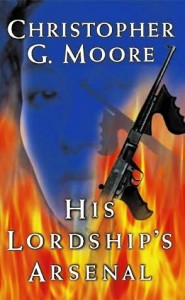 I don’t think there is a man out there who hasn’t toyed, at least once in his lifetime, with the idea of shooting a gun. I, myself, had an enduring fascination with medieval Japanese warfare and, before coming to Thailand in 2002, had been very curious what it would feel like to hold a gun in my hand, to slowly squeeze the trigger and send the bullet into a cardboard target. In the meantime, I have handled sporting pistols, real life handguns, and assault rifles, and now I’m attempting to cool off this obsession.
I don’t think there is a man out there who hasn’t toyed, at least once in his lifetime, with the idea of shooting a gun. I, myself, had an enduring fascination with medieval Japanese warfare and, before coming to Thailand in 2002, had been very curious what it would feel like to hold a gun in my hand, to slowly squeeze the trigger and send the bullet into a cardboard target. In the meantime, I have handled sporting pistols, real life handguns, and assault rifles, and now I’m attempting to cool off this obsession.
Maybe my former fascination with fire weapons was the main factor when I took from my shelves Christopher G. Moore’s debut novel His Lordship’s Arsenal and not one of the other books by the same author that I hadn’t read yet. The front cover sports the faded face of an Asian woman behind flames and the image of a gun and its shadow. The gun is none other than the Thompson Colt submachine gun, which made history in WWII but was also used in WWI and the Prohibition time in the United States.
His Lordship’s Arsenal by Bangkok-based Canadian writer Christopher G. Moore was published for the first time in 1985 and republished in Thailand by Heaven Lake Press in 1999. The initial success of the novel was the reason why Moore gave up his position at the University of British Columbia where he was teaching law and went on to write (and edit) over 20 novels and collections of short stories.
The whole story in His Lordship’s Arsenal spins around Wild Bill Anglin, a mysterious character who ends up in flames in a Canadian brothel. The sole owner of the only prototype of a submachine gun, Wild Bill gives it to Potter, an emissary sent by none other than Colonel Thompson, the founder of Auto-Ordnance Corporation, helping thus the Americans build their famous gun displayed on the cover of the novel.
Christopher G. Moore demonstrates in His Lordship’s Arsenal an impressive knowledge of guns, mixing real events, dates and gun descriptions with a fictional plot. Matthew Burlock, a Canadian judge brought up by Potter and educated at Oxford under a scholarship from the Auto-Ordnance Corp., is indecisive when it comes to giving his ruling in the case of a bizarre ritual murder at Delrose Hotel.
In order to get over the impasse he felt over the Delrose Hotel case, his next-door neighbour, a rich and dodgy psychiatrist, prompts Burlock to write an autobiographical sketch of his own life. And thus, the reader learns about the judge’s childhood and adolescence under the supervision of Potter, about his time at Oxford and his friendship and affair with his future stepmother, and, most of all, his fascination with guns and his qualities as an excellent marksman.
Although at first it is difficult to connect the dots, slowly the reader begins to see the overall picture that brings together, in a flashy denouement and after a series of coincidences, Burdock’s real father, Wild Bill’s assassin, the Auto-Ordnance Corp.’s new business endeavors, and the role Burdock’s mother and his ex-stepmother had in the Delrose Hotel murders. In the aftermath of the discovery of what had really happened in the case file that he was analyzing, Burdock loses his collection of rare (unregistered!) fire arms to the local police, but manages to save his favourite pistol, the 1903 Browning used by Gavrilo Princip to assassinate Archduke Franz Ferdinand and his wife Sohpie in Sarajevo, thus setting off a chain of events that saw the beginning of WWI. (After some research I found out that the pistol used by Gavrilo in the assassination was not the original 1903 Browning model but the one made by Browning’s Fabrique Nationale in 1910.)
Moore’s background in law is evident in His Lordship’s Arsenal, a mixture of literary fiction and genre fiction. One could say that Moore’s first novel was the springboard the writer needed to go on making use of his legal expertise to create memorable characters, among the most popular being Vincent Calvino, a fictional Bangkok-based private eye.


An excellent review of one of my favorite books. For me the most disturbing aspect of Moore’s work is its fortelling of the weapons manufacturers’ influence on our world today. Now truly peace is only “a time for paying dividends and retooling” for tomorrow’s profitable conflicts. A chilling prophecy come true.
If the author, or reviewer have any information to support the claim that the Thompson saw service in WWI it would be welcomed by Thompson collectors world wide. The known documentation to date supports that prototypes were produced in 1919, maybe 40 or so, then Colt manufactured approx. 15,000, for the Auto-Ord. Corp. in 1921.
There is a story about a shipment of the prototypes waiting on the docks to go to France in November of 1919, but with the wars end, they were returned to Auto-Ord., or so the story goes.